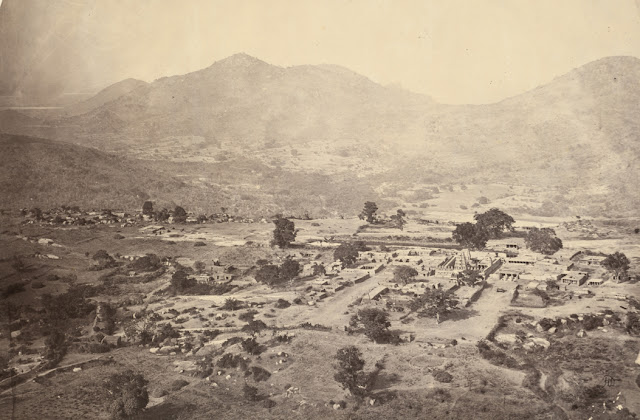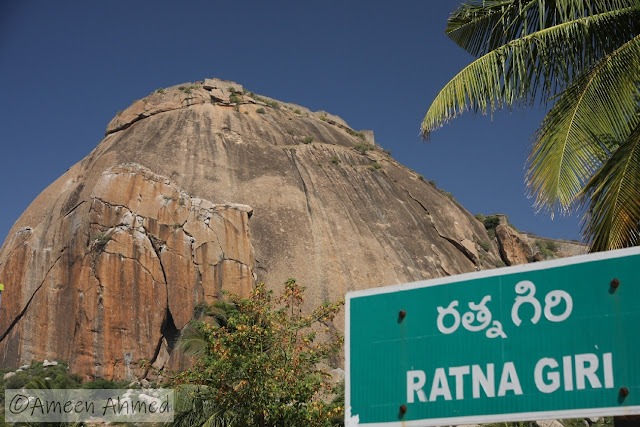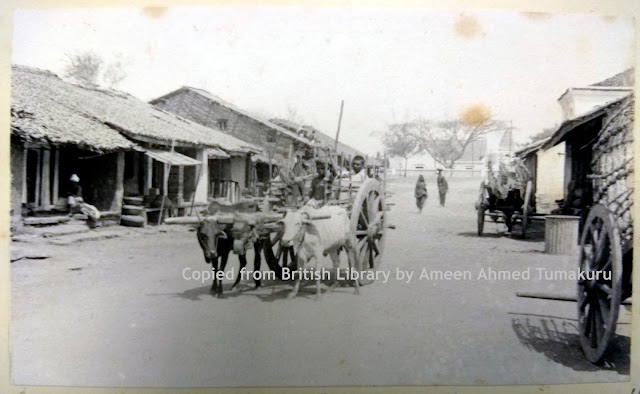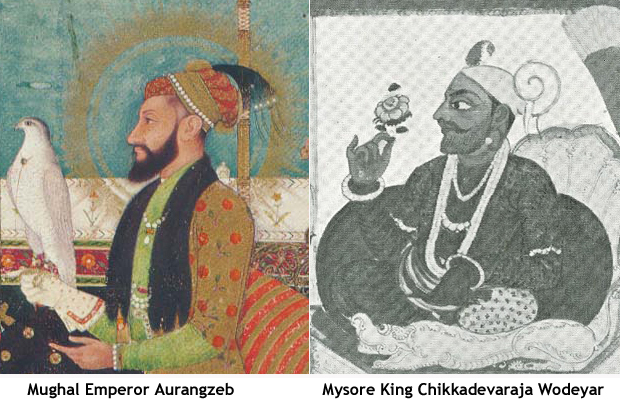44 sites of Hindus, including Sringeri Mutt and other temples, attacked by Marathas in 1790 - 92 CE.
Aug. 6: Maratha General Parshuram Bhau approaches Gokak to invade Karnataka (present day Mysore Kingdom) with a detachment of East India Company's Bombay Army commanded by Captain Little. Marathas have upward of 10,000 fighting men including 5,000 Pindaris marauders (1).
Sep.10: Betgeri villagers, north of Dharwar town, beats back Bhau’s Pindari marauders. On Bhau's orders, his Rohilla Gardee troops plunder the village without mercy and capture many villagers.
Sep. 14: Bhau’s army swells to a cavalry of 15,000 and an infantry of 3,000. Armies camps at Narendra village a few km north of Dharwar. English soldier David Price witnesses burning of a village by Maratha soldiers at night (2).
Sep. 15: Hubbali Town surrenders to Bhau after paying him protection money. Town and its inhabitants not harmed. Maratha and English armies attack Dharwar.
Dec. 13: Bhau’s eldest son Appa Saheb enters Dharwar town, as its defenses crumble. His troops start setting afire to the town at various places.
Dec. 18: Bhau's men get complete control of the Dharwar town and plundered it 'so completely that not a piece of wood was left standing'.
1791
Apr. 04: Badruzzaman Khan, Qilledar of Dharwar, surrenders the fort after a siege of six months. Several small towns and villages in vicinity razed to the ground by the Maratha soldiers.
Between Apr. 04 to Jul. 06: Maratha cavalry led by Raghunath Rao, brother of Parshuram Bhau pillage Sringeri. Tipu Sultan, writes a letter to Sri Sachidananda Bharati Swamy, the head of this institution, condemning the incident and sends money to repair it apart from numerous gifts to replace the looted items (3).
May 20: Captain Little’s detachment joins the route taken by Bhau’s army to Srirangapatna, near the town of Harihar. English soldier Moor wrote ‘The route of the army is marked by rain and devastation; every village and town being burned and razed with the ground…In the distance of ten miles, perhaps, as many villages destroyed will be seen, without an inhabitant to tell their names: such is the havoc this destructive army has caused in this fair country.’
May 27: Chikkanayakanahalli (present day Tumakuru District). Maratha soldiers always pick up fights with village heads and inhabitants. They take away things from the Kannadiga villagers without paying.
May 29: Maratha soldiers sell grains and commodities looted from Kannadiga villagers during their march from Dharwar to Srirangapatna, at exorbitant prices to desperate soldiers of Cornwallis’s army.
Attacks on towns, villages, and agricultural lands, mostly dominated by Hindus, after pillage of Sringeri in June 1791
Jul. 8: After marching up from Melukote near Srirangapatna, Bhau and Captain Little march north-west from Bangalore intending to take Sira.
Jul. 13: Hindu holy town of Devarayanadurga, in present day Tumakuru District, is taken by assault. Looted and burnt by Maratha soldiers.
Jul. mid: Sira fort is the base of Parshuram Bhau’s solders. They raid nearby villages. Buchanan, who visited the place about a decade later, found all the villages around the town plundered. Bhau’s soldiers attack Mooka Nayakanahalli Kote (MN Kote) village (in today's Tumakuru District). On failing to capture and loot the town, they abduct young Kannadiga girls (4).Jul. mid: Bhau marches to the hill fort of Ratnagiri situated today along the Karnataka – Andhra Pradesh interstate border. Buchanan traveled along the same path a decade later and witnessed a scene of devastation due to Bhau’s soldiers from which it had yet to recover. Buchanan also wrote about similar scenes of destruction at the neighbouring Badavanahally village in Madhugiri Taluk of Tumakuru District.
Jul. end: Maratha and British soldiers approach the prosperous town of Hiriyur. The people of town pay a considerable sum of money to Bhau, who promised it protection from his Pindaris. Yet, the town is looted by marauders of one of the Maratha chiefs.
Aug.: Bhau camps in the vicinity of Chitradurga through much of August while his cavalry goes around for forage and his marauders plunder Kannadiga villages. Around the same time, Captain Little’s detachment leaves for the British hospital set up at Harihar town. A detachment of Maratha troops under Raghunath Rao and Bala Saheb rides north-west and captures Rayadurgam. Rao ensures his troops don't loot towns and villages, unlike Sringeri. Both stay back to capture Molakalmuru the month after.
Aug. 12: Bhau’s soldiers take the village of Talaku, Chitradurga District by assault. Loot and burn it.
Sep. 16: Moor leaves the British hospital at Harihar for Chitradurga, to join Bhau. From Mayakonda Moor walk and fellow soldiers march and camp near Sirigere, a deserted village, when they sight Bhau’s marauders nearby.
Sep. 20: They join Bhau’s camp near Hireguntanur, Chitradurga District. Find the village burnt.
Dec. 14: Bhau marches from Chennagiri to Holehonnur. A short distance away from Chennagiri is Dondraghatta village, which is found burnt.
Dec. mid: Moor finds it common to sight six to eight villages burning at once. He sights ten villages burning one night. He compares the destruction caused by Marathas to ‘the ruin and devastation spread by such a host of locusts.’
Dec. 17: Bhau’s army camp on the east bank of Tungabhadra River, eight miles from Holehonnur, near Kudli Mutt. According to Moor, a married Dalit woman is sexually assaulted and murdered by a member of Maratha Army's Brahmin advisor near Shivamogga. Instead of punishing the offender, Bhau, has himself 'purified' by bathing in Tunga Bhadra river. He gets himself weighed in gold and silver and distributes the equivalent worth, about ten thousand rupees, among Brahmins. Around the same time, Maratha armies do a more brutal enactment of their Sringeri massacre. They ransack Kudli Mutt and massacre all non-Brahmins. The Kudli Swamy threatens to expel Bhau from the Smarata sect of Brahmins, after which Bhau donates a rupee each to Brahmins of the Mutt and compensates the Swamy with four lakh rupees.
Dec. 18: Pindaris start to loot around Holehonnur town.
Dec. 21: Holehonnur falls. Town is looted and burnt.
Dec. 23: Armies camp at Kagekodmagge village, which is burnt.
Dec. 25: English soldiers celebrate Christmas by sacrificing an Ox amidst the Peshwa Brahmins’ camp.
Dec. 26: Armies camp near the plundered village of Byadarahosahalli.
Dec. 29: Gajanur village plundered by Bhau's people, just like the fort nearby, which was in is addition burnt.
1792
Jan. 03: Shivamogga Qilledar Moiddin Khan surrenders. Maratha soldiers loot the six thousand houses inside. Most houses are burnt and many Kannadiga women abducted.
Jan. mid: Bhau marches west towards Bidanur but returns after learning about an approaching Mysoren army detachment.
Feb. 10: Bhau leaves Shivamogga and marches south via Ajjampura toward Srirangapatna.
Mar. 10: Bhau reaches Cornwallis’ camp near Srirangapatna. Armies prepare to leave after Mysore Kingdom accepts terms of peace on the terms set by English, Nizam and Marathas.
Maratha Armies’ continued destruction after the peace
Apr.: Despite getting money and territory, Bhau instead of retreating peacefully begins destroying Karnataka’s towns and crops as if it was the beginning of the war and not its end.
Apr. 17: Ajjampura town plundered.
Apr. 19: Ramadurga (Chitradurga District) plundered.
Apr. 21: Destruction wreaked by Bhau’s soldiers induces a famine in which many Kannadigas begin to perish. The shortage of grains is so severe that even Bhau’s soldiers now began to die, as they do not find food to eat. Afraid of dying of hunger, a Bombay army party accompanying Bhau decides to part ways and march by themselves to get out of Mysore Kingdom’s boundaries, which now are at Tungabhadra River at Harihar town.
Apr. 22: Santhe Bennur burnt.
Apr. end: Bhau’s army finally leaves Mysore kingdom.
There are many later British writers who corroborate the accounts of British soldiers, having themselves visited these places at a later period and finding themselves desolate and devastated. Among such authors are Buchanan, who visited these many of these places within a decade. Lewin Botham Bowring wrote similarly about Chitradurga and Shivamogga districts, having visited them about 80 years later (5). Rice wrote a similar account of Madhugiri town, a century later (6). According to an account in the Imperial Gazetteer, Vol. 7, 1908, Basavapatna town was another town sacked by Parshuram Bhau.(7)
For a primer on the Maratha attack of Sringeri Mutt in 1791, please click here.
References:
1) Moor, Edward., 'A narrative of the operations of Captain Little's detachment, and of the Mahratta army, commanded by Purseram Bhow; during the late confederacy in India, against the Nawab Tippoo Sultan Bahadur', J.Johnson, London, 1794.
2) Price, David., 'Memoirs of the Early Life and Service of a Field Officer, on the Retired List of the Indian Army', J. Loder, printer, Woodbridge, 1839.
3) Olikara, Nidhin., 'The Goddess and a Sultan: Hindu Coinage of Tipu Sultan', Accessed on Oct. 15, 2020 from this link https://toshkhana.wordpress.com/2015/05/26/the-goddess-and-a-sultan-hindu-coinage-of-tipu-sultan/
4) Buchanan, Francis., 'A journey from Madras through the countries of Mysore, Canara, and Malabar', in 3 volumes, 1807.
5) Bowring, Lewin B., 'Eastern Experiences', 1871.
6) Rice, B.L., 'Mysore A Gazetteer compiled for Government', 1897.
~~~
Acknowledgement: I thank the scholars whose works have helped me research and write this document. I am, in particular, grateful to Nidhin George Olikara, Shivamogga, India.
You may also like to read...
Tipu Sultan and Haidar Ali, an inspiration for America’s founding fathers, revolutionaries and Confederate Congress









Informative and needed for a correct historical perspective
ReplyDeleteThis account lays bare the fact that wars fought in that era was for loot & plunder rather then on religious lines. Might is Right , was the mottoo. Thanks for this informative article.
ReplyDelete